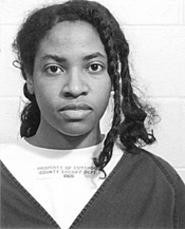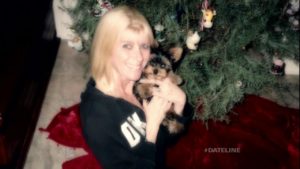Preparing to write a book can be a daunting progress. It gives me the sweats each time. How do you even know where the beginning is? What if you can’t find the end? And, curse it all, what the heck do you put in that big empty middle? Some writers are plotters, meaning they construct detailed outlines for each chapter before they start the story. Others are pantsers, meaning they make it up as they go along—flying by the seat of their pants. I am somewhere in the middle. I’ve found if I write a detailed outline ahead of time, I won’t write the actual book because there is no surprise left in it for me. However, I do like to have a loose roadmap so that I can see where I am going.
There is no one path that a writer must follow. The best techniques are the ones that work for you.
When I am starting a new book, I picture myself standing in front of a long wall filled with doors. I could choose any door! Eventually, I pick a beginning, and that means choosing one of the doors. Once I go through it, I have a new wall in front of me with fewer doors, because the possible directions of the story have been constrained by the place I began it. So I pick one of these new doors and go through it to advance the narrative, and in doing so, reduce my choices for the next chapter even more. By the time I get to the end, if I’ve done my job right, there should be only one door. It’s marked THE END, and it’s the logical conclusion to everything that’s come before it.
I also subscribe to the Alton Brown theory of scene construction. Alton Brown has a rule that every tool in the kitchen must serve multiple purposes. No point in having a juicer that only does lemons, for example. Likewise, a scene in your book should ideally have multiple reasons for its existence. Here’s a short scene from something I wrote ages ago:
James Dean Trumbull had, at age thirty-nine, outlasted his namesake by a good fifteen years. His mother had fallen in love with the fifties film idol’s tragic, romantic saga, and since Jimmy’s father was not around to dispute her name choice, James Dean had been reborn in a Hoboken hospital in 1960. His mother was a great believer in karma, and she had felt the previous James Dean was cut down before he could achieve the successes due him. By christening her son in the dead man’s name, she truly believed that fate would pick off where it had left off, and Jimmy would enjoy a magic carpet ride into history.
Forty years later, she was still waiting.
Jimmy sat at his cramped kitchen table, surrounded by avocado-colored appliances, and leaned closer to the scanner. He had a cigarette in one hand and a pen in the other, just in case he heard something worth writing down on his brand-new tablet of paper.
Amy entered the room just as he was blowing out a smoke ring. “If you must do that, at least go out to the stoop,” she said, waving her hand in front of her face. She had
her night watchman’s uniform on, with its sensible black shoes, blue polyester pants, and a shiny metal gun hooked to her hip.
“Can’t,” he told her. “Got to be in here to listen.”
“You listen to that damn box more than you do me. Sitting here all the time with that radio playing constantly. What if one of the kids had a nightmare or something?”
“I’d hear ’em.” He blew out another long train of smoke and aimed it upstairs to where their children lay sleeping. The police scanner crackled as the dispatcher radioed an armed robbery in progress.
Screw that, he thought. Get to the good stuff.
Amy’s keys clattered onto the counter as she fished around in her purse for something. “Well at least do the dishes if you’re going to be sitting here in the kitchen all night.”
“Something big is going down,” he said. “You can tell. No one’s saying anything yet, but you can hear it anyway. They’re all on edge.”
She picked her heavy winter coat up from the back of a chair. “You think you’re the only one with this toy? You think there aren’t a hundred reporters out there listening to the exact same thing you are? And they’ve got jobs, Jimmy. The papers are going to take their stories over anything you might come up with.”
“That’s why I’ve got to stay on top of this. I have to find an angle no one else has.”
Amy shook her head as if she had heard this story before.
“You wait,” he said. “You’ll see. I’ll get my headline and then everyone will want a piece of me. I’m going to be an overnight sensation.” He grinned and reached for her ass. “You can say you knew me when.”
“I know you, all right,” she replied, ducking him. She shrugged into her coat and picked up her old leather purse. “I’ve got to run or McCracken will have my ass.”
“He can’t have it. Your ass is mine.”
She made a face, but he could see the smile in her eyes. “There’s leftover cupcakes in the fridge,” she said, leaning down to kiss him.
He’d seen them in there, right next to the beer: chocolate frosted cupcakes with little hearts on them for Valentine’s Day. Amy talked tough, but she was such a sap.
“I’ll see you at six,” she said.
“Drive safe.”
She left out the back way, into the alley, and cold air stormed in through the kitchen, stirring the curtains and lifting the pages of his writing tablet. A voice crackled through on the scanner. “Five-six, be advised, the suspect has a previous warrant for attempted homicide.”
Jimmy leaned back with his smoke and listened.
This scene introduces Jimmy Trumbull as a would-be reporter searching for a big crime-related scoop. He’s a family man, watching the kids while his wife Amy works, but we can see there are limits to how much of himself he’s willing to give up for them: he won’t go outside to smoke.
The crimes he is waiting to hear on the radio form the backbone of the mystery, but the twist here is that Jimmy is the killer. He’s waiting for the cops to discover his handiwork. Finally, the other player introduced in this brief exchange is Amy’s gun. It’s crucial because the story ends with her using that gun to shoot Jimmy.
All this information is packed into 700 scant words. So that’s my other piece of book advice: make each line work hard for you. With all the effort you’re putting in, the least those words can do is hold up their end!




 ch a nice man,” she said with amazement, and that’s the thing about university murderers: they have to pass as normal at least long enough to assimilate. They could be your teacher, or the kid living down the hall in your dorm, and they look perfectly ordinary…the same as you or me.
ch a nice man,” she said with amazement, and that’s the thing about university murderers: they have to pass as normal at least long enough to assimilate. They could be your teacher, or the kid living down the hall in your dorm, and they look perfectly ordinary…the same as you or me.






